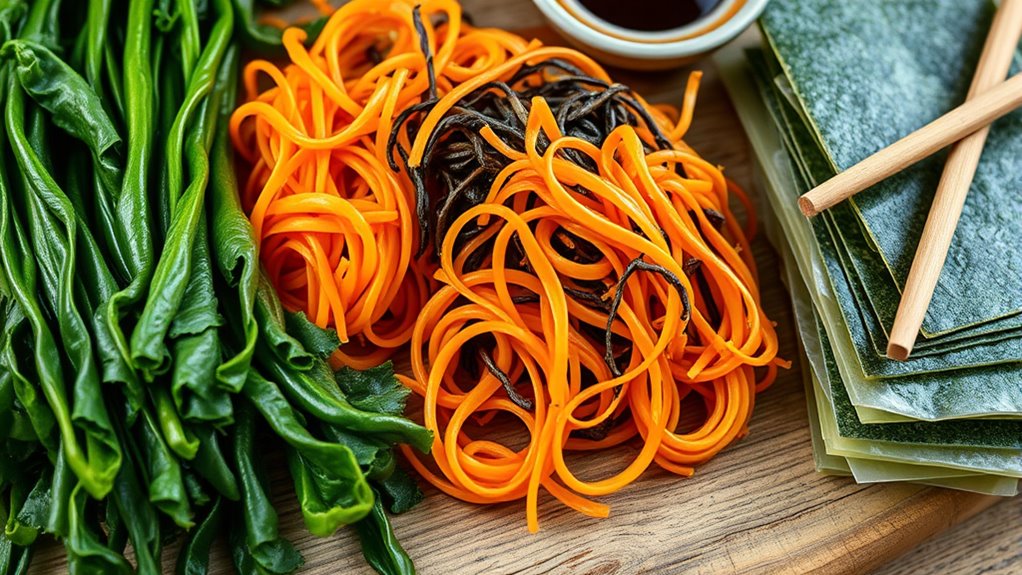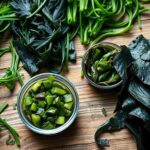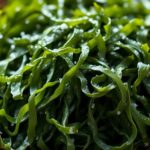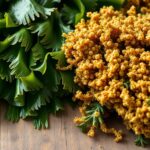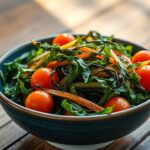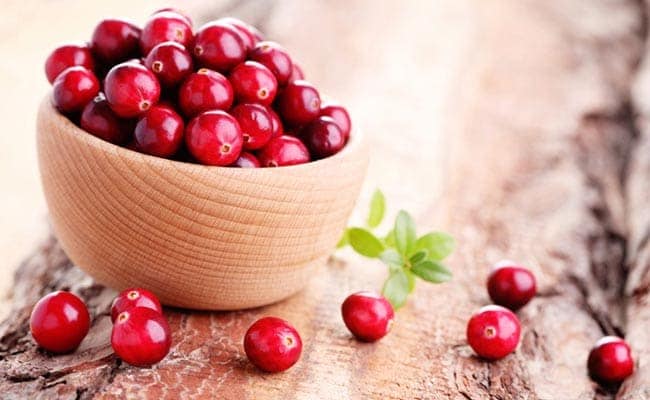To start cooking with sea vegetables, try milder options like wakame or nori and add small amounts to soups, salads, or rice dishes. Soak dried varieties beforehand and experiment with their natural saltiness by adjusting other seasonings. Ground them into powders for seasoning or use as toppings to add crunch and flavor. Incorporate different types gradually to discover tastes and benefits. Keep exploring for more tips and creative ways to enjoy these nutrient-dense ingredients.
Key Takeaways
- Start with milder varieties like wakame or nori to familiarize your palate gradually.
- Rehydrate dried sea vegetables before cooking to enhance texture and flavor.
- Incorporate small amounts into soups, salads, or rice dishes to adjust to their taste.
- Use sea vegetables as toppings, wraps, or seasonings to add flavor and nutrients creatively.
- Experiment with different types and preparations to discover versatile uses in your cooking.
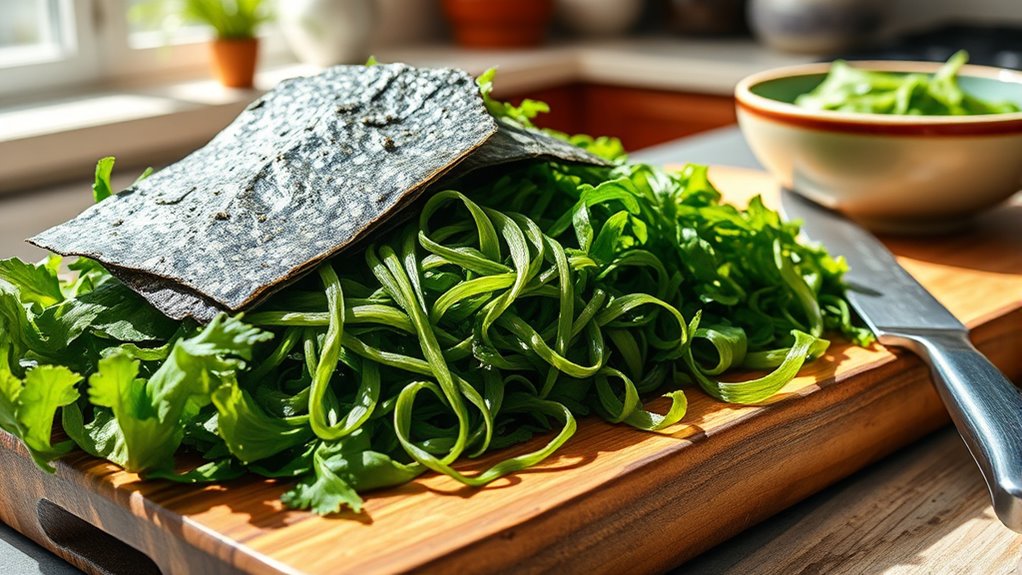
Sea vegetables have been an essential part of many culinary traditions for centuries, offering a unique flavor and numerous health benefits. If you’re just beginning to explore these oceanic ingredients, you’ll find that they’re versatile and packed with nutrients. One of the main reasons to incorporate sea vegetables into your cooking is their impressive nutritional benefits. They are rich in iodine, which supports thyroid health, and contain a wide range of vitamins and minerals, including vitamin C, K, calcium, magnesium, and iron. Plus, they are high in antioxidants and dietary fiber, making them excellent for promoting digestion and overall wellness. Their low calorie and fat content also make them a healthy addition to various dishes.
Sea vegetables are nutrient-dense, supporting thyroid health and digestion with vitamins, minerals, antioxidants, and fiber.
When it comes to culinary uses, sea vegetables can be surprisingly adaptable. They can be added to soups, stews, salads, and rice dishes to enhance flavor and nutrition. For example, nori, the seaweed used in sushi, can be toasted and crumbled over salads for a crispy, umami-rich topping. Kelp, another popular sea vegetable, can be chopped and stirred into broths to add depth and a subtle salty taste. Wakame, often used in miso soup, rehydrates quickly and lends a delicate flavor and tender texture. Dried sea vegetables are also easy to incorporate—simply soak them in water to rehydrate before chopping or blending into your recipes. Additionally, some sea vegetables contain unique compounds that may help support immune function, making them a beneficial addition to a balanced diet.
Getting started with sea vegetables is straightforward. If you’re unfamiliar with their taste, try starting with milder options like wakame or nori. You can add small amounts to your favorite soups or salads to get accustomed to their flavor profile. As you become more comfortable, experiment with incorporating kelp into homemade broths or blending seaweed into smoothies for an extra nutritional boost. Because they are naturally salty, you might want to reduce the amount of added salt in your dishes when using sea vegetables to prevent over-salting.
Additionally, sea vegetables can be used as wraps for sushi or rice balls, or they can be ground into powders to sprinkle over dishes as a seasoning. Their culinary versatility means you can get creative and discover new flavor combinations. Keep in mind that their flavor can be quite intense, so start with small quantities and adjust according to your taste. Incorporating sea vegetables into your cooking not only diversifies your diet but also boosts your intake of essential nutrients, making your meals more wholesome and satisfying. Exploring sea vegetable varieties can open up even more delicious and nutritious options for your meals.
Frequently Asked Questions
Are Sea Vegetables Safe for People With Shellfish Allergies?
Sea vegetables may not be safe if you have a shellfish allergy because of potential shellfish allergy considerations and cross reactivity with seafood. Even though they are plant-based, they can sometimes be contaminated with shellfish or processed in facilities handling shellfish. To stay safe, always check labels, consult your allergist, and consider avoiding sea vegetables if you’re concerned about cross reactivity or contamination.
How Do I Store Dried Sea Vegetables to Maintain Freshness?
To keep dried sea vegetables fresh, store them in airtight containers in a cool, dark place. Proper storage techniques prevent exposure to light, humidity, and air, which can degrade their quality. When stored correctly, dried sea vegetables typically have a shelf life of about 6 to 12 months. Check for any signs of moisture or mold regularly, and reseal the container tightly after each use to maintain their freshness.
Can Sea Vegetables Be Used in Desserts or Sweet Dishes?
Think of sea vegetables as nature’s salty magic wand—you can craft surprisingly delightful sea vegetable desserts. Yes, you can use seaweed in sweet seaweed recipes, blending its umami with honey or fruit to create unique, savory-sweet treats. Incorporate dried or rehydrated seaweed into puddings, gelatins, or even baked goods. These sweet seaweed recipes add a surprising depth of flavor and health benefits, making desserts both delicious and nourishing.
What Are the Environmental Impacts of Harvesting Sea Vegetables?
You should know that sustainable harvesting of sea vegetables helps protect the ocean ecosystem by preventing overharvesting and habitat destruction. When you choose responsibly sourced sea vegetables, you’re supporting healthy marine environments and maintaining biodiversity. Overharvesting can lead to the decline of wild populations and disrupt local ecosystems. By being mindful of where you buy, you contribute to the preservation of ocean health and guarantee sea vegetables remain a sustainable resource for future generations.
How Do I Tell if Sea Vegetables Are Fresh or Spoiled?
You can tell if sea vegetables are fresh by checking their freshness indicators like vibrant color, firm texture, and a mild ocean scent. Avoid any with dull appearance, sliminess, or a strong, unpleasant odor—these are spoilage signs. Fresh sea vegetables should feel crisp and look lively. If you notice any discoloration, sliminess, or an off smell, it’s best to discard them to guarantee safety and quality.
Conclusion
Now that you’ve uncovered the basics of cooking with sea vegetables, imagine the delicious dishes waiting to be created. Will you dare to experiment with bold flavors or stick to familiar recipes? The ocean’s bounty offers endless possibilities, and your culinary adventure is just beginning. Get ready to surprise yourself—sea vegetables might just become your new secret ingredient. Are you ready to dive deeper and access their full potential in your kitchen? The tide is turning—your sea veggie journey awaits.
Ilana has been a vegan for over 10 years. She originally made the switch for health reasons, but soon found herself becoming more and more passionate about the ethical and environmental implications of a vegan lifestyle. Ilana is the author of The Graceful Kitchen, a blog all about veganism. She loves to cook up delicious and nutritious vegan meals, and share her recipes with others who are interested in leading a cruelty-free life. Ilana is also a strong advocate for using whole foods as the foundation of a healthy diet, and believes that going vegan is one of the best ways to achieve this.
